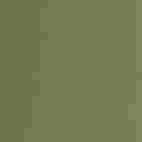Tennessee Warbler
At a Glance
This bird is found in Tennessee only briefly, during spring and fall migration; but there is no point in giving it a more descriptive name, because the bird itself is nondescript. The male makes up for his plain appearance with a strident staccato song, surprisingly loud for the size of the bird. Nesting in northern forests, the Tennessee Warbler goes through population cycles: it often becomes very numerous during population explosions of the spruce budworm, a favored food.
All bird guide text and rangemaps adapted from Lives of North American Birds by Kenn Kaufman© 1996, used by permission of Houghton Mifflin Harcourt Publishing Company. All rights reserved.
Category
Perching Birds, Wood Warblers
IUCN Status
Least Concern
Habitat
Forests and Woodlands, Freshwater Wetlands, Shrublands, Savannas, and Thickets
Region
Alaska and The North, California, Eastern Canada, Florida, Great Lakes, Mid Atlantic, New England, Northwest, Plains, Rocky Mountains, Southeast, Southwest, Texas, Western Canada
Behavior
Direct Flight, Flitter, Rapid Wingbeats
Population
110.000.000
Range & Identification
Migration & Range Maps
In spring, many migrate north across the western part of the Gulf of Mexico. Strays show up regularly in the west, especially along the Pacific Coast in fall, where a few may spend the winter.
Description
5" (13 cm). Spring male white below, green on back, with gray cap, white eyebrow. (Warbling Vireo has thicker bill, grayer back.) Female duller. Fall birds mostly yellow below; unlike Orange-crowned Warbler, they have white undertail coverts, plain yellow chest.
Size
About the size of a Sparrow
Color
Black, Gray, Green, White, Yellow
Wing Shape
Rounded
Tail Shape
Notched, Square-tipped
Songs and Calls
A sharp, staccato di-dit-di-dit-swit-swit-swit-chip-chip-chip-chip-chip, fastest at the end; song often comprised of 3 distinct parts.
Call Pattern
Flat
Call Type
Chirp/Chip, Hi, Trill, Whistle
Habitat
Deciduous and mixed forests; in migration, groves, brush. Breeds in bogs, swamps, and forests. Prefers openings in second growth balsam-tamarack bogs, or aspen and pine woods, or edges of dense spruce forest. Nests near slight depressions of boggy ground. During spring migration, mostly high in trees. During fall migration, often lower in saplings, brush, weedy fields.
Sign up for Audubon's newsletter to learn more about birds like the Tennessee Warbler
Behavior
Eggs
5-6, sometimes 4-7. May lay more eggs during outbreaks of spruce budworm. Eggs white, with some marks of brown or purple. Rarely parasitized by cowbirds. Incubation by female only, 11-12 days.
Young
Development and care of the young, and age when they leave the nest, are not well known. Probably 1 brood per year.
Feeding Behavior
Forages in the outer foliage of trees, sometimes hanging head downward. Takes insects in dense patches of weeds. In summer, male may feed mostly in treetops, female remaining nearer the ground. Forages in flocks of up to 200 on wintering grounds, often in coffee plantations.
Diet
Mostly insects, some berries and nectar. In summer feeds mainly on insects, including caterpillars, scale insects, aphids, beetles, flies, ants, leafhoppers, and others; also spiders. Takes nectar from catkins, and some juice from grapes. In winter in the tropics, feeds on nectar, berries, and the protein-rich structures that cecropia trees produce at base of leaves.
Nesting
Male has loud repetitious song on breeding territory. In ideal habitat, nests are closely spaced in loose colonies. During courtship, male performs song flight up to 60' above the ground. Nest: Concealed in a depression on ground under bushes or overhanging grass. Site is usually on mossy hummock in a wet area, but will nest on fairly dry ground on steep hillsides. Nest (built by female) is open cup made of thin grass stems; lined with fine dry grass, porcupine quills, or moose hair.
Conservation
Conservation Status
Local breeding populations rise and fall, apparently in response to outbreaks of certain forest insects, such as spruce budworm. Overall numbers of this warbler seem healthy.
Climate Threats Facing the Tennessee Warbler
Choose a temperature scenario below to see which threats will affect this species as warming increases. The same climate change-driven threats that put birds at risk will affect other wildlife and people, too.







